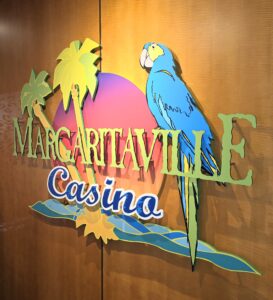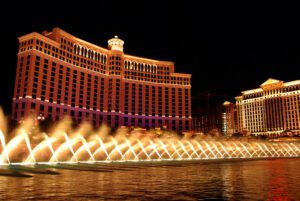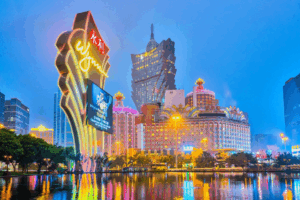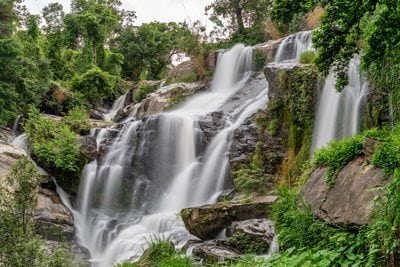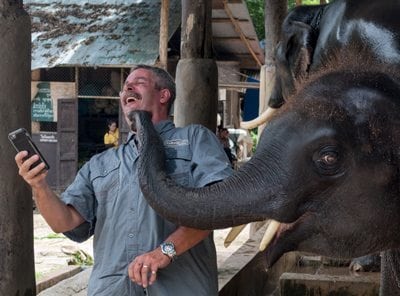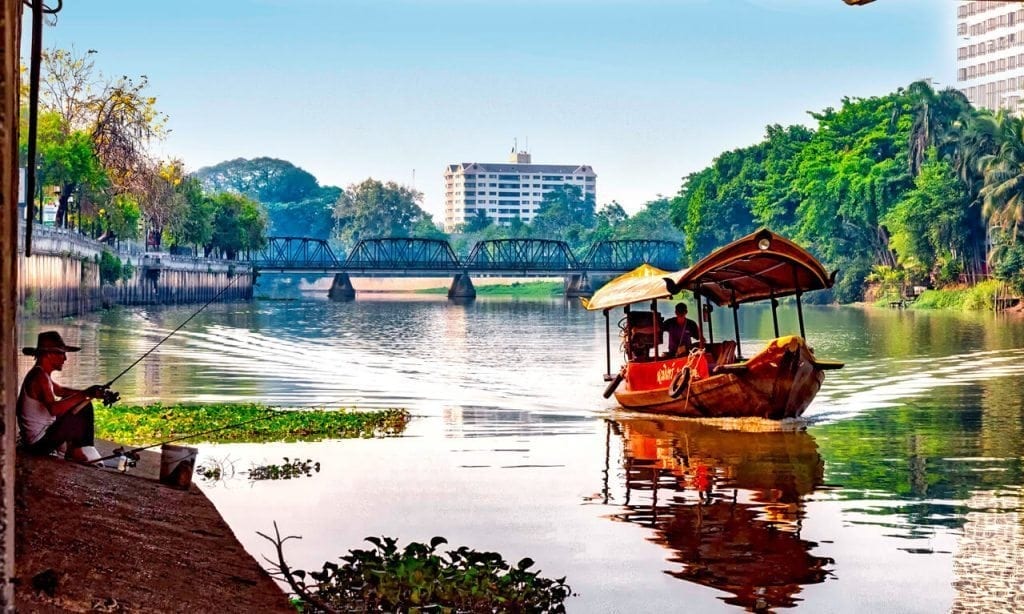
Chiang Mai is said to be the most laidback city in Thailand. Having been founded over 700 years ago as a walled city, it is located between two mountain ranges in the Mae Ping river plain. The remnants of the old wall with its moat still ring the one square mile (2.6 sq. KM) Old City.
In part 1 we learned more about public transportation in this beautiful city, as well as how to drive yourself around, which markets to visit and the best accommodations. In this part, we look at Buddhist temples, restaurants, more sight-seeing and what you can expect from the climate.
Temples
There are 30 Buddhist Temples inside the Old City and over 100 in the surrounding area.
- Wat Chedi Luang has the largest chedi in town.
- Wat Phratad Doikhum (1300 years old) has the largest Buddha at 17 meters (56 feet) tall.
- Wat Doi Suthep is located on Doi (mountain) Suthep on the West side of Chiang Mai and has a splendid view of the city all the way to the East mountains from 3500 feet elevation, 2500 feet above the city. This is a very ornate 629 year old temple and a favorite “must see” facility. Sunrise photographs from the Wat (temple) deck are an iconic Chiang Mai photo.
- Wat Umong provides a pastoral forest and lake setting.
- Wat Suan Dok has the most ornate shrine I’ve seen.
- Wat Pra Singh is generally considered the most beautiful.
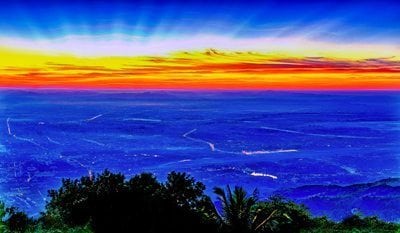
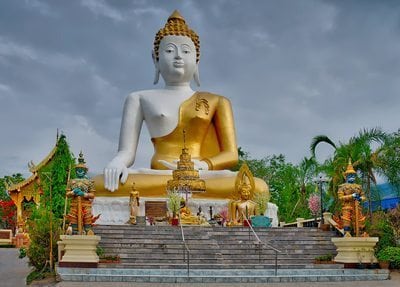
Restaurants
Chiang Mai has a wide variety of restaurants, Thai, Lanna (Northern Thai), Japanese, Vietnamese, Burmese, Indian, Indonesian/ Malaysian, Sushi, Chinese, Hot Pot, American, and even Mexican. The Salsa Cafe is excellent Mexican and Miguel’s is close behind. The street food is typically fresh, often delicious, and one stall on Ratchapuek makes as good a fried chicken as my granny from Georgia. Another favorite for what I consider gourmet Thai is K’s Kitchen. The Maya Shopping Mall on Huay Kaew West of the old city has an entire floor dedicated to restaurants and the basement floor is also dedicated to Thai food.
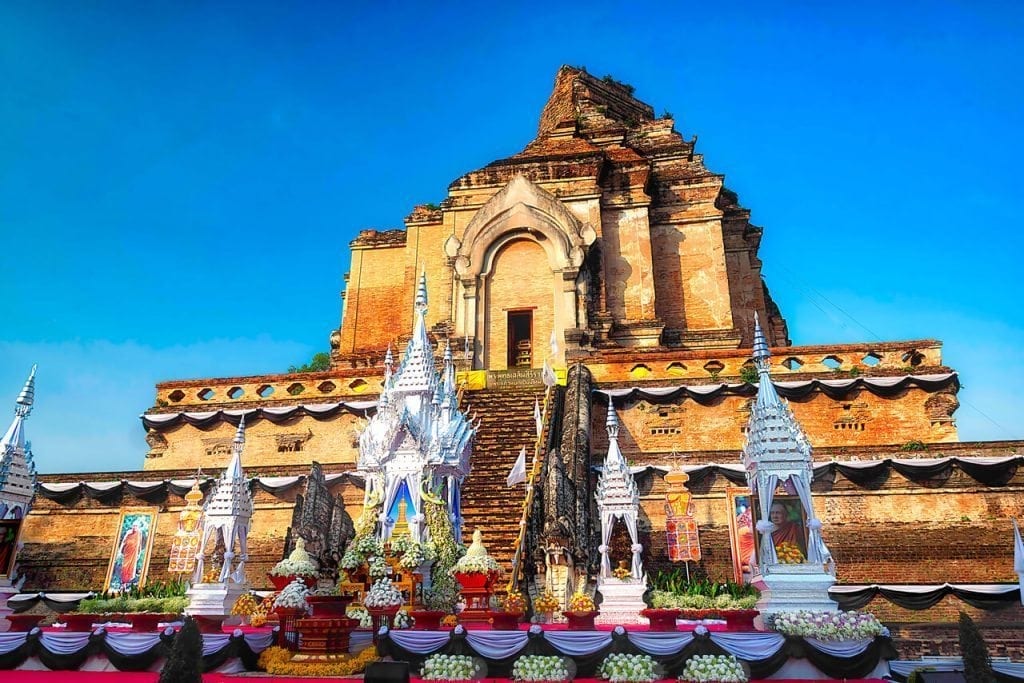
And More…
Other shopping malls include Kad Suan Kaew, which is where many locals shop, the Central Airport Plaza, Central Festival, and La Promanada, slightly outside the tuk-tuk and Song Taew service areas but housing the Thai Immigration offices and an upscale shopping offering.
In addition to temples, there are opportunities for rafting, kayaking, elephant, tiger, snake, insect, and butterfly camps. Chiang Mai province includes Thailand’s highest mountain, Doi Inthanon, and the two largest waterfalls, Mae Ya and Mae Klang.
A section of road in Mae Rim (a suburb) has all of the above and the Mae Sa (year round) waterfalls. If you like waterfalls, be aware the dry season can cause some rivers to be completely dry. The Huay Kaew waterfall is a prime example but it does provide an excellent hiking trail alongside the riverbed all year with good views of the city and an interesting undercut cave and grotto. The Huay Kaew waterfall is located 500 meters beyond the Chiang Mai Zoo behind a temple area as one begins the ascent to Wat Doi Suthep.
For an interesting and laid back alternative to the downtown tourist activities, there’s a lake called Huay Tueng Tao Lake North of Chiang Mai on Canal Road. The lake isn’t well known to tourists, has hundreds of small covered bamboo thatched huts at lakeside. There are restaurants that service different groups of huts, a zip line, some boating concessions, and a 35 acre lake to enjoy. It is within bicycle distance from town.
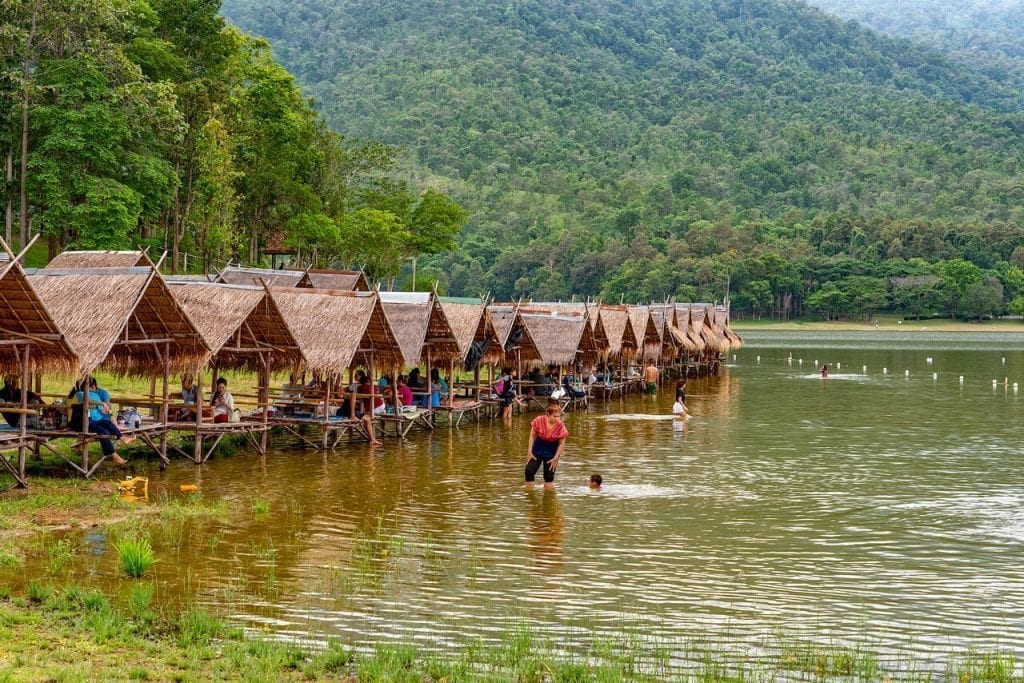
Climate
The climate in Chiang Mai is basically a dry, lower humidity period that lasts from October through February with very comfortable temperatures for outdoor activity. Starting in Mid-March temperatures begin to rise with 105 F (42 C) being normal for April, Thailand’s hottest month. This period produces weather like Las Vegas with high temperatures and low humidity. April is when Songkran (Thai New Year) is observed. Instead of fireworks, the Thais indulge in a country-wide water fight with streets lined with people with everything from water pistols to garden hoses and buckets. Everyone is fair game and arriving anywhere during daylight hours usually involves getting drenched. Considering the temperatures during April, being drenched isn’t necessarily a bad thing.

In May, the early monsoon season begins, temperatures drop back into the 80’s and low 90’s and the humidity rises. The monsoon season usually involves late afternoon showers that hit and run, rather than going on for hours. The activity most impacted by the monsoon season is motorcycle exploration of Northern Thailand, as the mountains toward Myanmar can receive downpours with little warning.
Thai farmers will burn rice and sugar cane fields in spring, hunters sometimes burn wooded areas to flush game, and clearing activities contribute to poor air quality issues from March to May, ending when the monsoon season starts. Autumn and winter provide the best air quality and most picturesque skies and the spectacular Lantern Festival in December usually has clear clean skies as the thousands of lanterns loft skyward. Chinese New Year is also celebrated.
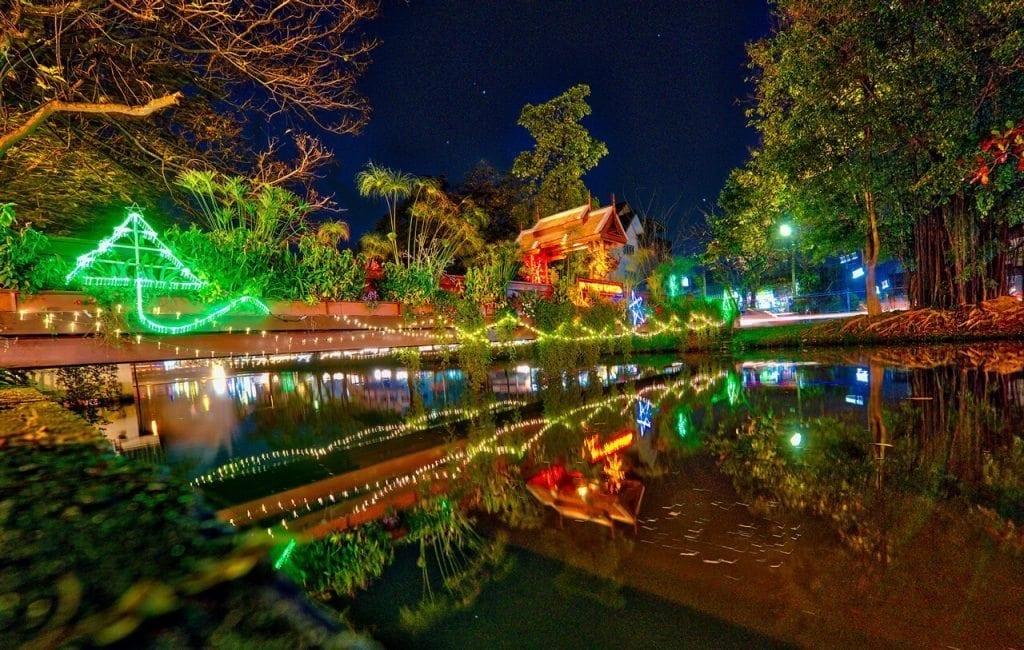
Chiang Mai is an excellent destination to enjoy Thailand but avoid the hustle and bustle of Bangkok, Phuket, Pattaya, Krabi, and Hua Hin or a great area to enjoy on a trip that involves stops at all of them.
Chiang Mai | Thailand’s Mountain Jewel – Part 1
Other articles you might find interesting:
Be Prepared | Sound Advice For Frequent Travelers
Get The Most Out Of Your Holiday With These Facebook Expats Pages
50 + years travel experience starting with the Bahamas at age 9 and encompassing the US, Canada, Mexico, Korea, China, Taiwan, and Thailand. Employment ranges from public school teacher, coach, concert audio and lighting tech, logistics, to heavy construction. Currently retired living expat life in Thailand.



